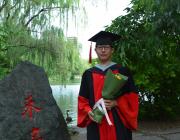演讲日期:
演讲地点:
演讲资料文件:
Background: The accurate identification of the origin and transmission of mutations causing severe Mendelian disorders such as Dravet syndrome (DS, mainly caused by de novo SCN1A mutations) is critical in genetic counseling. In current practice, a mutation is considered “de novo” if Sanger sequencing detects the mutant allele in peripheral blood DNA of the patient but not in their parents. However, the “de novo” mutations determined by Sanger sequencing might in fact be inherited from undetected parental mosaicism, largely due to technical challenges to detect and quantify low-fraction mutant alleles. Method: To investigate the origin of novel mutations, we developed, benchmarked and applied a new method named PASM that combined PGM semiconductor deep amplicon resequencing with a Bayesian model for mosaicism to detect and quantify mosaic mutations with mutant alleleic fraction (MAF) as low as 0.5%. We validated PASM results with digital PCR as well as pyrosequencing. Results and Conclusions: Of 174 “de novo” SCN1A mutations in DS probands by Sanger sequencing, PASM identified 15 cases (8.6%) of parental mosaicism. PASM also validated another five mosaic detectable by Sanger sequencing. MAFs in the 20 cases of parental mosaicism ranged from 1.1% to 32.6%. Twelve (60% of 20) mosaic parents did not have any epileptic symptoms, and their MAFs were significantly lower than those mosaic parents with epileptic symptoms (P = 0.016). Varied MAFs were detected in multiple samples obtained from the same donor, demonstrating that postzygotic mutations could affect multiple somatic cells as well as germ cells. These results suggest that more sensitive tools for detecting low level mosaicism in parents of families with seemingly “de novo” mutations will allow for better informed genetic counseling. PASM were further applied for validation of mosaicism identified by a bioinformatics pipeline for mosaicism from whole-genome or whole-exome sequencing data named MosaicHunter and a DNA circulation based highly-sensitive detection framework for mosaicism named o2n-seq. In the whole-exomes of 2321 autistic families, 1248 and 285 putative child and parental mosaicisms were identified by MosaicHunter, and PASM validated 51% of them. Using Bayesian model coupled with Ampliseq sequencing, PASM validated 81.8% putative low-fraction mutations with MAF ranging between 0.1% and 10% identified by o2n-seq, demonstrating that PASM is a sensitive validation method for low-fraction mosaicism. The presentation is one of the platform presentations in Session 12 of the American Society of Human Genetics 67th Annual Meeting on 18, Oct, 2017 in Orlando, Florida.
